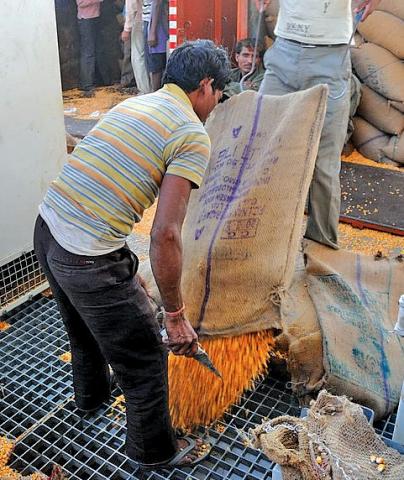3.1.2 Intake of raw materials at the dumping hopper
Effective and dust free operated intake dumping points with a large conveying capacity are sufficient for reliable intake of materials. Raw materials are dumped as per a set schedule into various dumping hoppers provided in raw material godown (Fig. 3.2). The density of the material determines to a large extent the amount and speed of the conveyor. Raw materials issued for production are to be checked for their soundness prior to issue for production. Materials damaged during storage (due to high moisture, mould, pest, rodents or rancidity) have to be sorted and discarded. The dust extraction system provided at each dumping point must be monitored regularly and maintained periodically to ensure it is in proper working condition and is performing efficiently. An improperly functioning of dumping hopper aspiration unit not only leads to material (powder) loss but also an unhealthy environment for the dumping personnel. Magnetic grills if provided at the dumping hoppers must be cleaned periodically so that ferrous impurities do not carry forward. Raw materials dumped into the intake line conveyors are carried by bucket elevators to pre-weighing bins through cascade magnets (magnetic separators) and Jute twine removers (or drum sieves) to remove the ferrous and non ferrous impurities such as jute strings. Quality control officer must periodically inspect the dumping stations and pre-weighing bins to determine whether impurities are being screened effectively both at the dumping station and at the entry point into the pre-weighing bins. Jute strings trapped at the dumping hopper grills or jute twine removers must be periodically removed and destroyed by burning or else they are bound to find their way back into the plant.
Fig. 3.2 Dumping of maize grain

